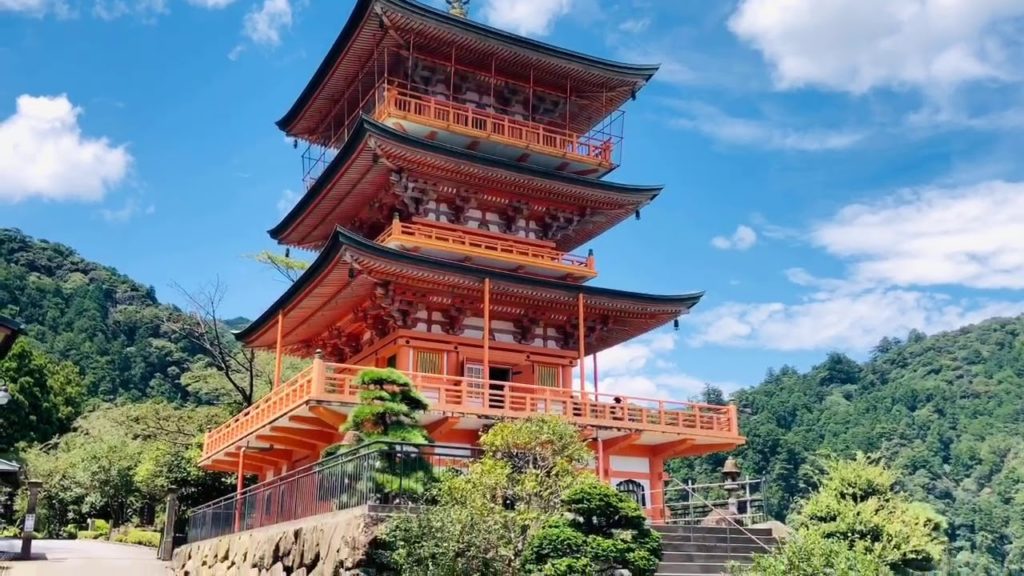Wakayama Prefecture is a historical wonder and the spiritual heartland of Japan. We have gathered four of favorite locations across the area.
Nachi Waterfall
Nachi Waterfall is one of the best-known waterfalls in Japan. At 133 meters, it is the highest waterfall cascade in Japan , with one ton of water dropping down the cliff every second. and is revered as the embodiment of Shinto deity, Hirou Gongen. This awe-inspiring and dynamic view is truly unforgettable.
A three-story vermilion pagoda makes up part of the Nachisan Seiganto-ji complex and with the falls located directly behind, it creates one of the most iconic and spiritual vistas in all of Japan.
Shirarahama Beach / Engetsuto (Engetsu Island)
With more than 600 kilometers of coastline, Wakayama is lined with numerous beaches, including white sandy beaches. This white-sand resort is over 600 meters long and is the sister beach to Hawaii’s Waikiki Beach. The area is famous for sand and sun, but also a popular surfing area. Kumanosansho-jinja Shrine stands along the beach, giving this a distinctly Japanese feel. July and August are the peak times for swimming season.
Engetsuto Island is the nickname for a small island off the coast of Shirahama, properly called Taka Island. Its nature-made arch lets seawater pass through; the hole was formed through the combined effects of wind, waves, and time. The nickname Engetsu means “full moon” and it’s easy to see why the name has stuck thanks to this formation. The island measures just 130 meters from north to south. Glass bottom boat tours are offered around the island and its clear waters make it easy for visitors to see tropical fish and corals.
Wakayama Castle
Wakayama Castle overlooks the city and still has an original moat and stone wall. The nearby Momijidani Japanese Garden, especially beautiful in autumn colors, includes a teahouse where visitors may sample matcha green tea.
The castle museum located inside the main castle building is open to the public and houses historic artifacts.
Kumano-gawa River Overview
It served as a vital transportation link for the communities in the mountains and pilgrims past.
This sacred waterway is also considered an object of worship. Because of its spiritual aspects and use as part of the Nakahechi section of the Kumano Kodo pilgrimage route, it was included as UNESCO World Heritage in the property.
It is possible to ride down the river in a traditional wooden flat bottom boat as pilgrims did centuries ago.


AloJapan.com